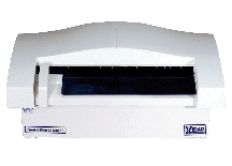Is your office caught in between?
As the push for digital patient records continues, more and more offices are embracing the concept of truly chartless technology. Once the infrastructure is in place, moving forward into chartless is easy, but some offices are concerned about the availability of radiographs that are still stored in their older analog charts. Although it isn’t necessary to convert all of your old paper records to digital charts, in some instances the doctor prefers having access to that information.
As the push for digital patient records continues, more and more offices are embracing the concept of truly chartless technology. Once the infrastructure is in place, moving forward into chartless is easy, but some offices are concerned about the availability of radiographs that are still stored in their older analog charts. Although it isn’t necessary to convert all of your old paper records to digital charts, in some instances the doctor prefers having access to that information.
There also are clinicians who use digital sensors for intraoral radiographs but, even though they still have a film pan, they want all of their images to be digital. And then there are the specialty offices that are totally digital yet rely on referrals from offices that still use film and specialists not digital because of the nature of the exams performed. Obviously, we need a system to bridge these types of situations.
A new solution
To address these situations in the past, we were forced to use off-the-shelf scanners with transparency adapters. While these devices functioned adequately for document scanning, they weren’t designed with the dental environment in mind. Image quality wasn’t tuned to diagnostic radiographs and sometimes the devices were difficult to integrate into a dental practice, and the scanned films were not a legal copy.

To help solve these problems, VIDAR Systems Corp. came to the dental market with a new concept: a dental film digitizer. While new to dentistry, VIDAR is certainly not a new company. The company has been in business for more than 25 years and has 85% of the installed user base of radiographic scanners/digitizers in the medical imaging market with 20,000 installations. January 2010 saw the arrival of the company’s first dental product, the Dental Film Digitizer.
The market for this device is specialists with film referrals and dentists who are hoping to delay some of their digital radiographic purchases, but still want to have a digital office.
What it does
VIDAR does not refer to the device as a “scanner” because it really isn’t. Its entire purpose is to digitize film and, as such, it does an admirable job. Although we don’t use any film in my office, we put the device through its paces by digitizing film that comes in from other offices to make it available to us in our chartless environment. The device has done a great job and provides exceptional images.
It also is the only FDA-cleared device for digitizing dental images. It scans images quickly, which can help speed up work flow. Pans and FMX can be digitized in 18 seconds at the highest resolution, 28 seconds for Cephs. Commonly used film mounts are acceptable to digitize intraorals or any non-paper mount that meets the digitizer size specifications.
It’s easy to use
The Digital Film Digitizer connects via USB and uses a TWAIN driver that allows it to be connected directly into most dental software programs. We have used the device with a direct interface into Eaglesoft with no problems and easy integration.
If your office is “caught in between,” take a look at the VIDAR solution. It may well be just what you are looking for.